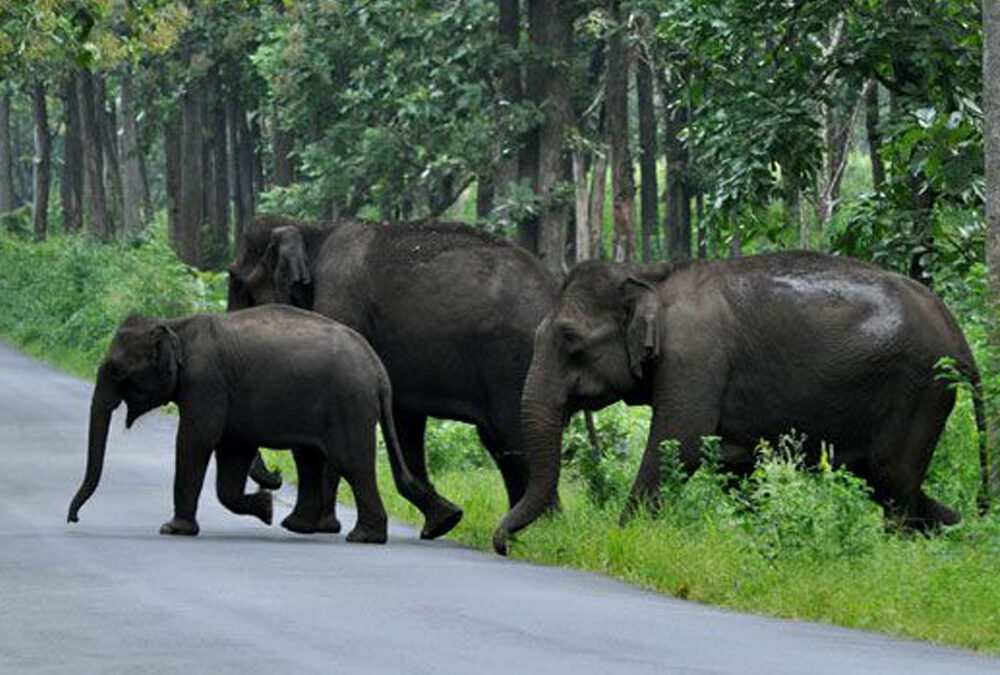Wayanad Wildlife Sanctuary: A Sanctuary of Natural Beauty and Wildlife
Wayanad Wildlife Sanctuary, located in the picturesque Wayanad district of Kerala, is one of the most prominent wildlife sanctuaries in South India. Established in 1973, this sanctuary is part of the Nilgiri Biosphere Reserve and offers an ideal blend of natural beauty, rich biodiversity, and a haven for wildlife enthusiasts. Spanning over 345 square kilometers, the sanctuary is home to a wide variety of flora and fauna, making it a must-visit destination for nature lovers, photographers, and wildlife aficionados.
Highlights of Wayanad Wildlife Sanctuary
1. Rich Biodiversity
- Home to Endangered Species: Wayanad Wildlife Sanctuary is known for its rich biodiversity, with several species of animals, birds, and plants, some of which are endangered. Key wildlife species include Asian elephants, tigers, leopards, gaur (Indian bison), sambar deer, wild boar, and various species of monkeys.
- Birdwatching Paradise: The sanctuary is also a haven for birdwatchers, with over 200 species of birds, including Indian hornbills, eagles, and woodpeckers.
2. Three Divisions of the Sanctuary
- Muthanga Range: This is the most popular section of the sanctuary, located on the Kerala-Tamil Nadu border. Muthanga is well-known for its vast grasslands and large herds of elephants. It also provides a perfect setting for wildlife safaris.
- Tholpetty Range: Located in the northern part of the sanctuary, Tholpetty is famous for its dense forests and rich wildlife. The range is home to tigers, leopards, elephants, and other animals, offering visitors an exciting safari experience.
- Kurichiat Range: The least explored of the three ranges, Kurichiat offers a more tranquil and less commercialized experience. The range is ideal for nature walks and spotting a variety of flora and fauna.
3. Safari Experiences
- Jeep Safari: Visitors can embark on a thrilling jeep safari through the sanctuary’s rich terrain. The safari allows you to spot various wildlife species in their natural habitat, from majestic elephants to elusive tigers. The Muthanga and Tholpetty ranges are the most popular safari routes.
- Guided Tours: For a more informative experience, visitors can opt for guided tours where expert naturalists provide detailed insights into the sanctuary’s wildlife, plant life, and ecosystems.
4. Elephant Habitat
- Asian Elephant Sightings: The sanctuary is one of the best places to see wild elephants in their natural habitat. Muthanga, in particular, is famous for its elephant herds that roam freely through the sanctuary’s grasslands and forests. Visitors often spot these magnificent creatures up close during safaris.
- Elephant Camp Visits: In some areas, there are elephant camps where visitors can learn about the conservation efforts and see the gentle giants up close.
5. Trekking and Nature Walks
- Trekking Trails: Wayanad Wildlife Sanctuary offers several trekking trails for adventure enthusiasts. These treks take you through dense forests, rivers, and hills, providing an opportunity to spot wildlife and experience the region’s stunning landscapes.
- Nature Walks: For those looking for a more relaxed experience, nature walks guided by local experts allow you to immerse yourself in the natural beauty of the sanctuary while learning about the various species of plants, birds, and insects that inhabit the area.
6. Flora and Fauna
- Diverse Flora: The sanctuary is home to a rich variety of plants, ranging from tropical forests to grasslands and wetlands. The vegetation includes medicinal plants, shrubs, and towering trees, making it a paradise for nature lovers.
- Unique Wildlife: In addition to elephants and tigers, Wayanad Wildlife Sanctuary is home to several other species like nilgai, langur monkeys, civets, and various reptiles, including snakes and crocodiles.
7. Best Time to Visit
- Winter (November to February): The best time to visit the sanctuary is during the cooler months from November to February when the weather is pleasant for outdoor activities like safaris and treks.
- Avoid Monsoon (June to September): It’s advisable to avoid the monsoon season as the trails can be slippery, and wildlife sightings are fewer during this time.
8. Photography and Birdwatching
- Photographer’s Haven: The sanctuary offers excellent opportunities for photographers to capture the natural beauty and wildlife of Wayanad. From elephants grazing in the grasslands to the elusive tigers lurking in the forests, the sanctuary is a photographer’s paradise.
- Birdwatching: With its diverse range of bird species, the sanctuary is also a prime destination for birdwatching. Bring your binoculars and camera to capture the beauty of rare birds in their natural habitat.
9. Nearby Attractions
- Soochipara Waterfalls: Located close to the sanctuary, Soochipara is a stunning three-tiered waterfall surrounded by lush greenery. It’s a great place to relax after a wildlife safari.
- Pookode Lake: A serene freshwater lake surrounded by forests, Pookode Lake is perfect for boating and nature walks.
- Edakkal Caves: Known for their prehistoric petroglyphs, Edakkal Caves are another must-visit attraction in Wayanad, offering both history and adventure.
Conclusion
Wayanad Wildlife Sanctuary is an essential destination for nature lovers, wildlife enthusiasts, and adventure seekers. The sanctuary offers a perfect mix of wildlife sightings, trekking, and stunning natural beauty, making it a great spot for an unforgettable experience in the lap of nature. Whether you’re on a thrilling jeep safari or enjoying a peaceful nature walk, the sanctuary promises an enriching experience that brings you closer to the wild wonders of Kerala.

